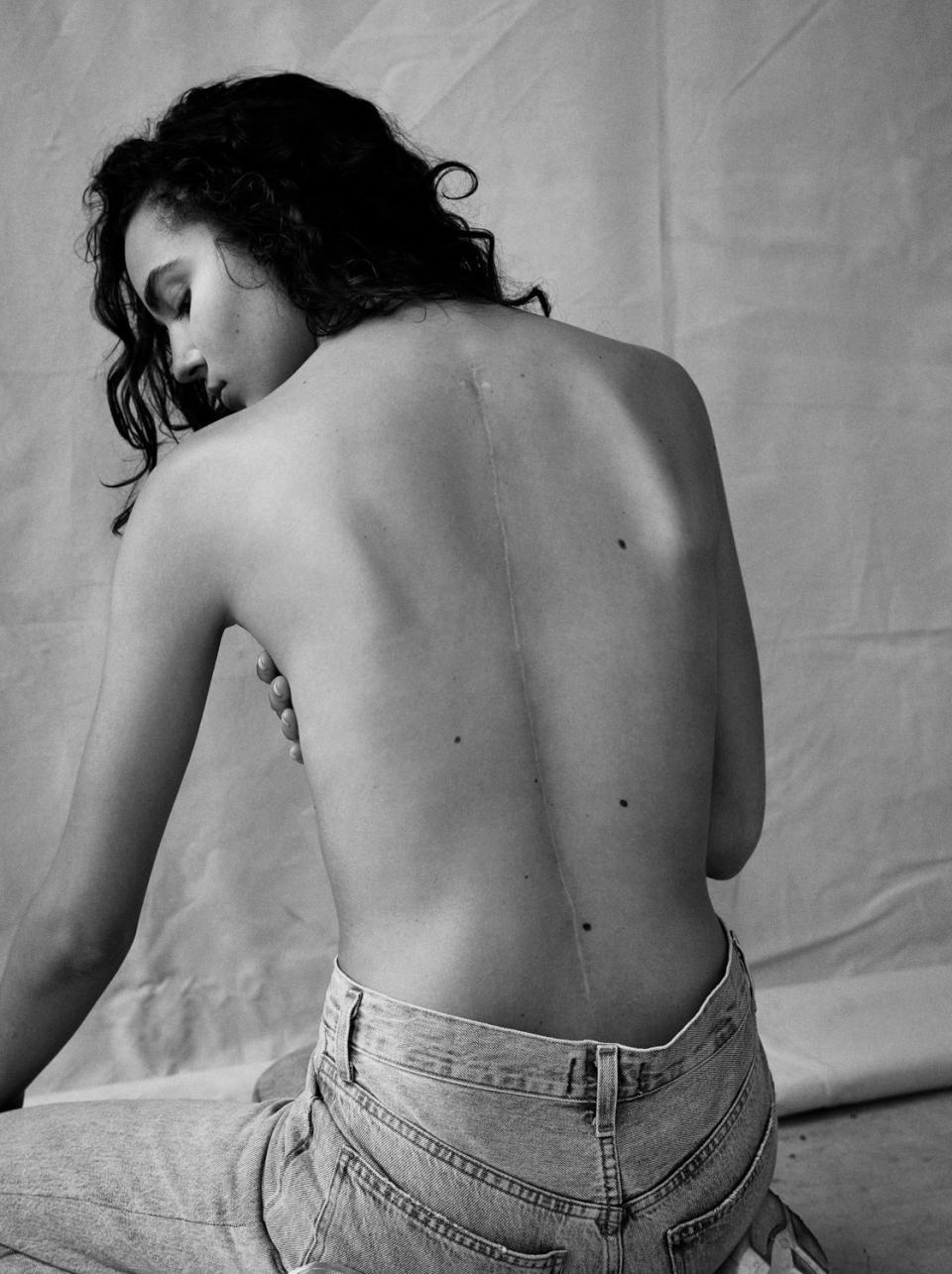How Model Emm Arruda Wants to Change the Way We Think About Scoliosis
Emm Arruda is ready to take action. One of the world’s top models walking alongside Gigi Hadid and Kaia Gerber on major runways, the Canadian beauty’s latest role has her in the spotlight for a very different reason. The first model ambassador for nonprofit Set Scoliosis Straight, she’s out to teach others about the condition, which impacts 3% of the population. Diagnosed with an abnormal curvature of the spine at age 14, she underwent extensive spinal surgery to correct the condition, spending the years leading up to her fashion career relearning how to walk. “I needed [my mom’s] help to do everything—there were nights where I couldn’t move because I didn’t want to wake her up to help me,” she shared during a visit to the Vogue office. “Afterward, I knew I wanted to get more involved in raising awareness, and [when I began modeling], it was one of the first things I brought up to my agents.”
Prior to having surgery in 2014, Arruda’s scoliosis was discovered during a routine medical exam. “My doctor must have noticed that I looked weird, because that day she asked to feel down my spine, and she’d never done that [before],” says Arruda, who had been inadvertently showing signs for months prior. “I used to sit with one leg under my butt to prop myself up; I guess it was my body’s way of trying to balance. It grew so gradually we didn’t notice it, but my doctor, who saw me once a year, noticed it right away.”
While many individuals who suffer from scoliosis can be treated with body braces, the severity of Arruda’s curvature, which affected her spine, hips, and ribs, meant surgery was the sole option. “We did an X-ray and found out the degree of both my curves—one was 49 degrees, and the other 66—and my doctor informed me that anything over 60 had to be operated on,” says Arruda, who was put on a waiting list at the Hospital for Sick Children in Toronto. “I freaked out. I had never had surgery; I had never even broken a bone.” Her fears were exacerbated by the lack of useful information online, even in the age of WebMD. “I knew nothing about it before being diagnosed,” she explains. “I had never even heard the word or met anyone else who had it. I was on Google searching for things, and of course, they give you the worst information.”

The lack of accurate data and advice is something Arruda hopes to change through her work with Setting Scoliosis Straight. Her official duties as an ambassador began earlier this month at their annual gala, where she shared her story and participated in an educational course for patients heading into the same journey she faced five years earlier. “I loved interacting with everyone and just speaking with people, hearing their stories and questions pre- or post-op,” she says. “I wish there could’ve been something like that for my family to go to, because it’s so important to know about the new research and treatments available.”
On social media, Arruda’s been doing her bit to increase visibility as well. Once insecure about the 15-inch scar that extends down her back, she now wears it with confidence. Proof of her resilience and the physical evidence of her recuperation has been documented in a stunningly raw image series by photographer Anthony Tudisco. “When I did the photo series, the response was so positive,” she says. “People were like, ‘Thank you for showing this; it makes me feel comfortable that you feel comfortable.’ It reminded me of the first time I shared that I had scoliosis on my Instagram, my DMs were flooded with girls thanking me for being open and honest.”
Models are often asked to represent unrealistic ideals of physical perfection, and while Arruda is fine with clients who prefer that she cover her scar, she relishes the opportunities when she’s allowed to be herself. “If I’m wearing something backless, some designers will be like: ‘Oh, cover it.’ Or they’ll ask to put me in a different look or cover it with makeup,” she says. “But I’ve also had designers who embrace it, and I love that. Last year [when] I did Alexandre Vauthier couture, he put me in something backless, and I asked if he minded that my scar was visible. And he said ‘No, I love it. I want to show that off. To me, that’s a part of you, and it’s beautiful.’”
Originally Appeared on Vogue

